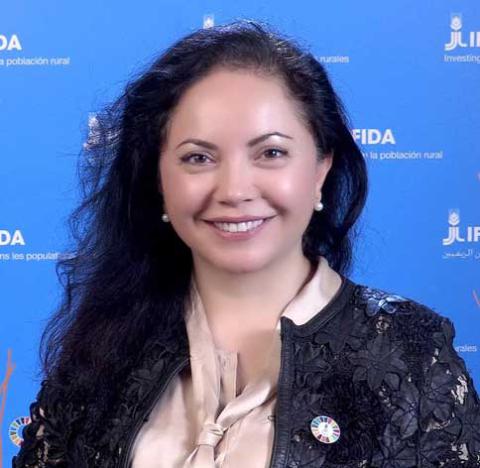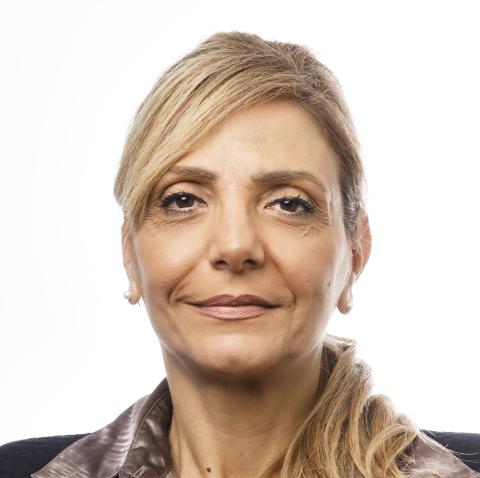The journey of IFAD's Office of Strategic Budget: Charting innovation horizons for change
The International Fund for Agricultural Development (IFAD) and the United Nations System Staff College (UNSSC) are dedicated to internalizing the UN Innovation Toolkit and comprehensively assessing how IFAD integrates innovation practices using tools such as the UN Innovation Diagnostic and the Toolkit more broadly.
Expanding upon the collaboration between the two organizations, through the IFAD-UNSSC Mentoring Partnerships Initiative, IFAD’s Office of Strategic Budgeting (OSB) embarked on a transformative journey in collaboration with IFAD’s Innovation Unit to unleash innovation and drive forward-thinking strategies. The lab empowered the Office of Strategic Budgeting (OSB) to navigate complex budgetary and strategic landscapes with creativity, agility, and resilience, ensuring continued success and relevance in the ever-changing field of strategic budget planning. Creating headspace for innovation within established processes posed a challenge for OSB. However, it knocked on the door of the Innovation Unit, seeking to enhance the architecture, scale up innovative ideas, and cultivate a culture of innovation within OSB.
What is the IFAD Innovation Lab and how was it established?
IFAD launched the innovation labs in May 2023 to foster a culture of innovation while supporting the use and adoption of the UN Innovation Toolkit and diagnostic. The initiative has generated a lot of interest, and a 100 per cent satisfaction rate in all the IFAD personnel that have participated. OSB seized the opportunity of the Innovation Lab to brainstorm and prototype ideas within the work environment, evaluating feasibility, desirability and viability by collecting feedback from colleagues who could be directly impacted by the innovation proposed.
In addition to creating the headspace and nurturing the innovation culture, OSB applied the tools from the UN Innovation Toolkit to different use cases, not always related directly to their own work but rather to ensuring that the understanding of the tool was fully grasped by all the participants in the IFAD Innovation Lab. One example of this is the use of the storytelling tool of the Evaluation pillar to enhance the communication skills of teams and their ability to “sell” an idea.
The Innovation Lab was located in Castel Gandolfo, a picturesque Italian town southeast of Rome where creative ideas flourish. The lab was designed with the following agendas and purposes:
-
Identifying innovator types through the UN Innovation Diagnostic and understanding the strength-based approach in management to foster the innovation in teamwork
-
Diagnosing the enabling factors and barriers to innovation through a pre-event survey to tailor the Innovation Lab for OSB based on the Scan the Horizon tool
-
Experimenting with Lean Canvas to test ideas for feasibility, viability, and desirability in an “Ideathon"
-
Enhancing storytelling skills to drive progress and secure support for the innovative idea in a “Dragons’ Den”
-
Creating an environment for design thinking and user-centricity: understanding how to identify unique challenges within OSB by designing in collaboration with end-users, engaging governing bodies to gather support and feedback, and inspiring colleagues to align under a common headline for strategic objectives using the UN Innovation Toolkit.
Understanding how to build diverse, equitable and inclusive teams by leveraging innovation strengths through the “Innovation Diagnostic”
By recognizing and harnessing individual strengths, the team can optimize overall performance. Encouraging team members to contribute to areas of excellence leads to increased engagement, motivation, enhanced productivity, and job satisfaction. To achieve this, during the Innovation Lab's design process, OSB utilized the UN Innovation diagnostic to identify innovation personas and strengths, along with exploring team diversification. After diagnosing which of the six innovator profiles best fits colleagues, OSB identified strengths and areas for improvement based on the five pillars of the UN Innovation Toolkit: S.P.A.C.E (Strategy, Partnership, Architecture, Culture, Evaluation). OSB also received guidance on suitable innovation tools from the toolkit to build the capacity for creating a diverse, equitable, and inclusive team. For more interactive and engaged activities, teams with different profiles were formed, conducting an “Ideathon” using Lean Canvas to illustrate how diversity and strengths manifest in teamwork. OSB effectively utilized Lean Canvas as an innovative and feasible tool to define daily problems, propose doable solutions, and validate them, offering structured and straightforward ideas such as “Budgeting Business Intelligence and the Budgeting e-Performance Dashboard".
Developing the storytelling skill to achieve innovation objectives through “Innovation Storytelling”
Storytelling is not just about conveying information. It's about engaging, inspiring, and connecting with others in a meaningful way. Stories help place innovations in context. Effective storytelling is a powerful tool for driving progress and securing support. This contextualization is crucial for ensuring that innovations are relevant and meaningful. In line with this, the "Innovation Storytelling" tool assisted OSB in crafting compelling narratives for ideas by guiding in audience identification, message definition, and communication strategy. To streamline the approach, POB employed the "C.A.R" (“Challenge, Action, Result”) storytelling framework for pitching Lean Canvas-based ideas, enhancing the chances of securing buy-in decisions. This method allowed OSB to clearly communicate the importance of a specific innovation, the problem it targets, and how it fits into a broader narrative that influences daily routines and workstreams, all while addressing the challenge, the action taken, and the results achieved.
Using the “Scan the Horizon” to select the most effective ideation activity
In large and diverse environments such as United Nations agencies, deliberate and systematic idea generation is crucial for innovation. OSB utilized the “Scan the Horizon” tool to discover innovative solutions for specific challenges. This tool offered a structured approach for OSB to create clear challenge statements, identify the ideal types of ideas needed, and select appropriate ideation methods. Therefore, OSB streamlined the process of sourcing ideas tailored to their unique challenges and opportunities. Specifically, by using a decision tree, POB successfully chose the most suitable ideation activity to leverage the human and financial resources within the team and organization. Through the “Scan the Horizon,” OSB effectively harnessed resources, engaged stakeholders, and sourced high-quality ideas aligned with the goals.
Identifying the risk and reward in the unpredictable nature through the “Portfolio Strategy”
Budgeting is the process of working within uncertainty. OSB employed the “Portfolio Strategy” tool to facilitate the decision-making process by constructing an innovation portfolio that effectively balanced risk and return. This tool empowered OSB in several ways. Firstly, it allowed OSB to assess the overall risk profile of its innovation project portfolio. It also aided in identifying opportunities for resource reallocation in alignment with OSB's objectives and risk appetite. Using collected information, OSB could monitor portfolio changes as projects evolved. These tasks were achieved through listing priorities, scoring the solutions and challenges, and plotting them on the Portfolio Map to visualize overall riskiness. In this way, OSB learned how to measure and prioritize the risks and rewards of the portfolio in the budgeting process and pivot quickly in the face of unpredictability.
Enhancing innovation endeavours through the "Engage Governing Bodies" Tool
Given the nature of the budget process, which necessitates communication with various internal and external departments and stakeholders, the identification of governing bodies and the proper choice of channels are essential. In order to enhance the engagement of governing bodies in discussions related to innovation, OSB employed the “Engage Governing Bodies” tool as a strategic approach. This tool facilitated the customization of the engagement process to garner support for OSB's innovation strategy. OSB utilized it to explore diverse methods for engaging governing bodies and securing their buy-in for innovation endeavours. Consisting of three key steps, the “Engage Governing Bodies” tool involves defining the purpose of engaging governing bodies, crafting the appropriate message, and selecting the most effective engagement channels. By adhering to this structured approach, OSB acknowledged the vital role played by governing bodies in providing strategic guidance, resources, and approvals for innovation initiatives.
Using the “Headlines of the Future” to visualize the success for OSB
Cheers erupted when the Director of OSB, Saheed Adegbite, presented OSB's headlines of the future. The “Headlines of the Future” tool encouraged OSB to envision innovation goals and visualize what success would look like for OSB. It prompted OSB to identify potential barriers to overcome in achieving those goals and to start innovation efforts with a clear end goal in mind. By using this tool, OSB could align innovation initiatives with well-defined objectives, inspiring OSB colleagues to rally behind the desired outcomes.
Following in the footsteps of IFAD’s Treasury, which launched the IFAD Innovation Labs together with IFAD's Innovation Unit, OSB designed and structured their vision for the future and how to achieve that vision. The post-event survey revealed that all participants agreed that the workshop had inspired OSB to explore new strategies and approaches within IFAD's budgeting process. Over the intensive and pivotal three-day Innovation Lab, OSB was able to infuse a fresh breeze of innovation into the budget culture and streamline the structure. The ripple effect of the collaboration between OSB and the Innovation Unit is expected to lead to a change in the culture of innovation across IFAD. Thanks to the concrete and well-structured guidance from UNSSC, the Innovation Lab was enriched and tailored to OSB's specific needs and preferences.



